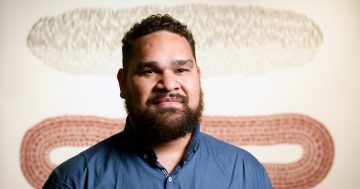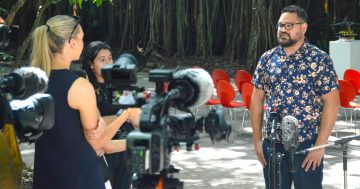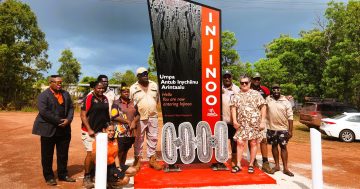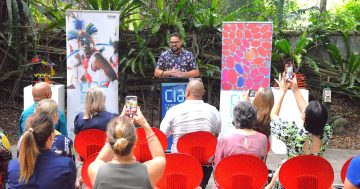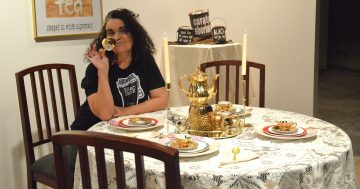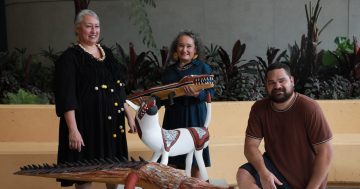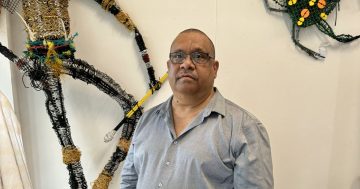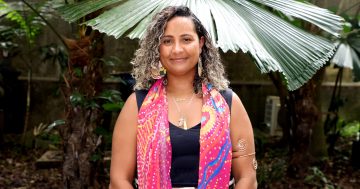
From aspiring high school artist to the new artistic director of the Cairns Indigenous Art Fair, Injinoo artist Teho Ropeyarn is leading the way in cultural preservation. Photo: Supplied.
From a boy in a remote Cape York community to a leader in Queensland’s Indigenous art scene, one Injinoo man’s decades-long dedication to his craft is being celebrated across the country.
Teho Ropeyarn was announced as the Cairns Indigenous Art Fair’s (CIAF) newest artistic director last week, bringing with him a decade of curatorial and leadership experience, and a deep-rooted passion for preserving First Nations art and culture.
As the 16th iteration of the event prepares to return to its roots at the Tanks Arts Centre this year, Mr Ropeyarn said he hoped to highlight a wider variety of artists and artworks throughout his reign.
“I think it will be a brilliant event; we definitely want to do a bit more work around commissioning artworks to push practices with different artists,” he said.
“Whether it’s large-scale or small-scale works in and around the precincts or inside the tanks, as well as outdoor pieces, we just want to bring that life and spark into the event, and really focus on highlighting artists and new work.”
Mr Ropeyarn said he first fell in love with art at school, and had several talented family members to look up to.
He went on to study at the College of Fine Arts in Sydney before returning to his community and starting a career based on keeping Indigenous art and culture alive.
“I think very much in the early days, it stemmed from preserving culture, so that was language and identity, and for myself, art became the vehicle for it,” he said.
“I did see that we did not have that identity, our Aboriginal heritage from Injinoo, so documenting that, doing research, digging up our tribal material, just to grasp some sort of an idea on who we are and who we were as people, was my focus.
“That was the whole purpose to go and study at the College of Fine Arts – to return back to community and encourage the revitalisation of culture through art.”
Mr Ropeyarn’s work will also soon be seen by commuters all over Brisbane, with his piece based on Cape York’s vast landscape currently being installed at the city’s Boggo Road train station.
Ataga Ulumu (red clay/road), which will measure approximately eight metres high and 25 metres across, highlights the similarities between the Jardine River and the Brisbane River, which runs close to the station.
“I touched on the Peninsula Developmental Road, and Country in itself, with water and the sky and land, and cross-referenced that with the Brisbane River,” he explained.
“It’s a nice crossover between Brisbane, where the work is being presented, and where I’m from in Cape York.
“It’s a long journey to get to this point, so it’s very exciting; you know, you come from a small Aboriginal community with mostly your family surrounding you, and to have been selected for something of that scale in the city, it’s massive.”
In the midst of a thriving career, Mr Ropeyarn continues to stay true to his original mission of promoting culture through art in the Northern Peninsula Area, and will share his expertise as a guest judge at this year’s Gab Titui Indigenous Art Award in June.
“I think it’s not just judging, it’s looking at the works and artists that are coming out of the Cape and Torres Strait, and see what we can support at CIAF,” he said.
“I was a finalist in the 2009 Gab Titui art award, and I was still studying in Sydney at the time; I’ve come a long way through my different roles, so to now be invited back to judge, it’s like it’s come full-circle.”


